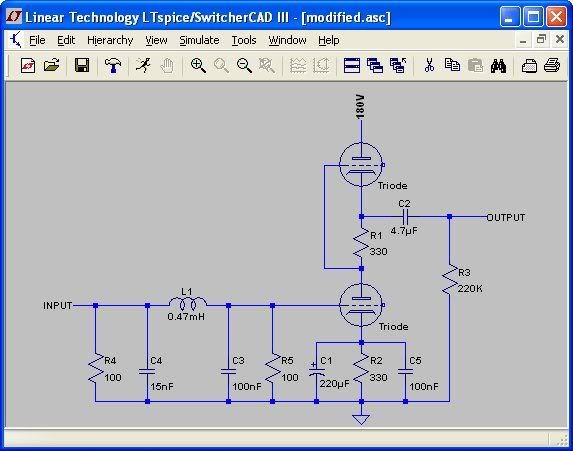regal
Headphoneus Supremus
- Joined
- May 27, 2006
- Posts
- 3,645
- Likes
- 19
This is an upgrade I am considering for a common DAC60. It has a PCM1704 which outputs +-1.2mA. Currently the I/V is a 220 ohm resistor which I think is too much and causing a congested sound with complex passages. This is an SRPP output stage with a 6DJ8
it would lower the I/V load to 50 ohms. Adding the a cathode bypass cap (C1) will boost the gain from 16 to 26. I estimate around 1.5 Vrms output. The filter is a copy of the HagDAC.

Does this seem to be a worthwhile upgrade?
it would lower the I/V load to 50 ohms. Adding the a cathode bypass cap (C1) will boost the gain from 16 to 26. I estimate around 1.5 Vrms output. The filter is a copy of the HagDAC.

Does this seem to be a worthwhile upgrade?

